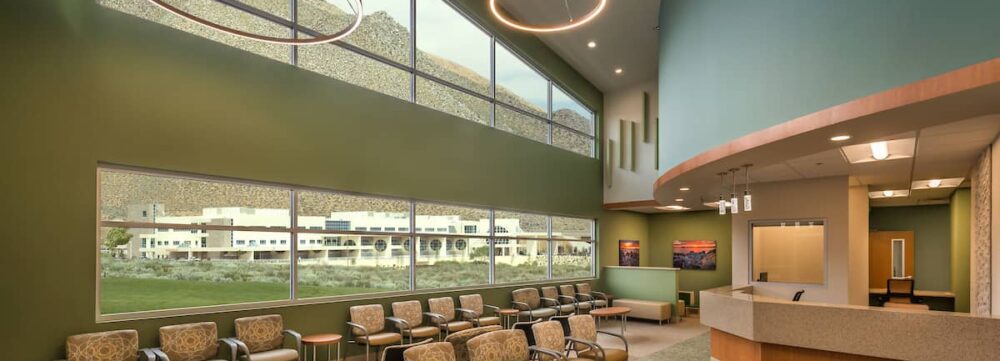Blog
Enhancing the Healing Environment: Top 3 Interior Colors for Optimal Healthcare Settings

As a healthcare design professional, I have always believed in the profound impact a well-designed environment has on patients’ well-being and recovery. Color, being a powerful element of design, plays a crucial role in creating a healing ambiance within healthcare settings. In this post, we will explore the top three interior colors that I recommend for healthcare facilities and delve into the rationale behind each choice.
Calming Blue
Blue, particularly in lighter shades, has long been associated with a sense of calm, serenity, and tranquility. It is an ideal choice for healthcare settings due to its ability to promote relaxation and reduce stress. Blue is known to lower blood pressure and heart rate, in turn, creating a soothing atmosphere for patients and their families. Moreover, its cool undertones also evoke cleanliness and sterility, enhancing the perception of hygiene in healthcare spaces. When used strategically, a well-balanced blue color scheme can create a positive impact on emotional comfort, making it an excellent choice for spaces like waiting areas, patient rooms, and rehabilitation centers.
Natural Earth Tones
Bringing elements of nature into healthcare settings has proven to be beneficial, and one of the best ways to achieve this is by incorporating natural earth tones. Colors such as soft greens, warm browns, and subtle yellows not only mirror the soothing qualities of the outdoors but also offer a connection to nature. These earthy hues can help create a serene and inviting space, promoting healing and recovery. Research suggests that exposure to nature-like elements can reduce anxiety levels, enhance mood, and contribute to faster healing. Therefore, incorporating natural earth tones into areas such as corridors, treatment rooms, and communal spaces can truly transform a healthcare facility into a sanctuary of wellness.
Uplifting and Rejuvenating Greens
Green is known for its ability to create a restful and refreshing atmosphere, making it an excellent option for healthcare environments. The color has an innate connection to growth, renewal, and vitality, evoking a sense of hope and rejuvenation. By utilizing various shades of green, such as mint, sage, or even subtle pops of lime, healthcare professionals can design spaces that uplift patients and staff alike. Green has also been linked to improved concentration and reduced eye fatigue, making it an optimal choice for spaces like consultation rooms, therapy areas, and staff lounges. The use of green in healthcare settings can contribute to a more relaxed and healing environment, enhancing overall well-being.
Interior Colors for Optimal Healthcare Settings
The impact of color cannot be overstated, especially in healthcare settings where patients’ emotional and physical well-being is of utmost importance. Among the numerous colors available, blue, natural earth tones, and green have emerged as the frontrunners in creating an optimal healing environment. These hues possess unique characteristics that promote calmness, connection to nature, and rejuvenation. By thoughtfully incorporating these colors into various spaces within healthcare facilities, design professionals can significantly contribute to patients’ positive experiences, fostering healing, comfort, and overall well-being. Read Healthcare Design: Promoting Efficiency and Patient Well-Being in a Small Facility and Designing the Perfect Healthcare Experience: Techniques for an Outstanding First Impression
Marie Wikoff is the creator of Wikoff Design Studio based out of Reno, Nevada. Her expertise in healthcare design has helped modernize healthcare organizations locally, regionally, and internationally, improving patient experience and outcomes. Her credentials include Evidence-Based Design Accreditation and Certification (EDAC), American Academy of Healthcare Interior Designer (CHID), the National Council of Interior Design Qualification (NCIDQ) and LEED AP. Contact Marie Wikoff







